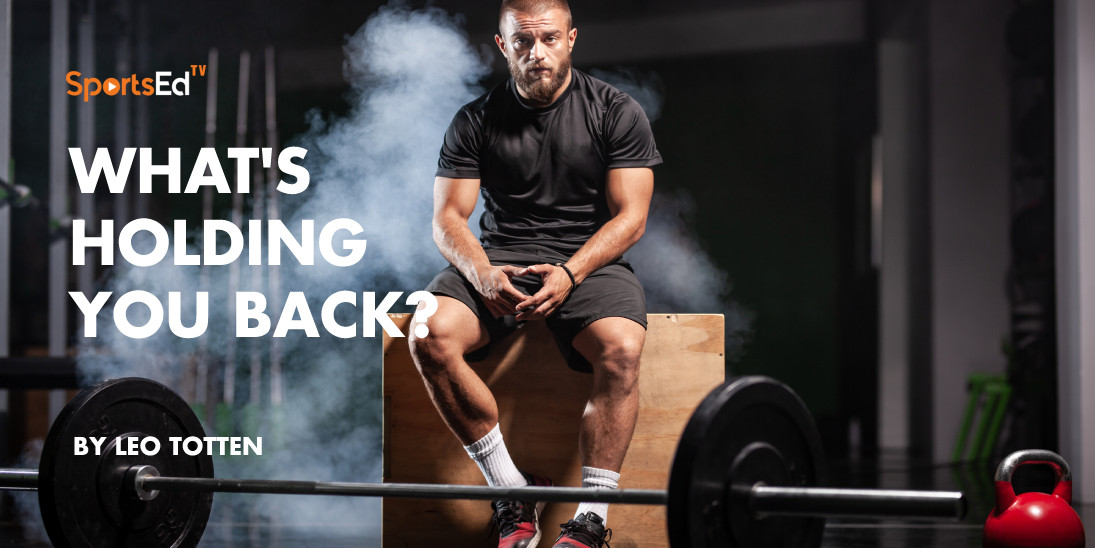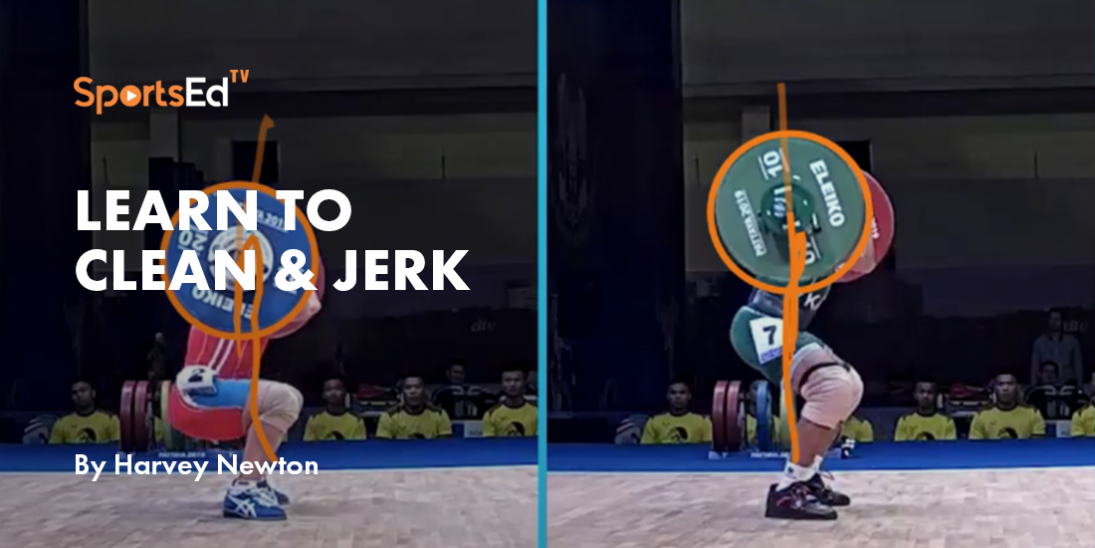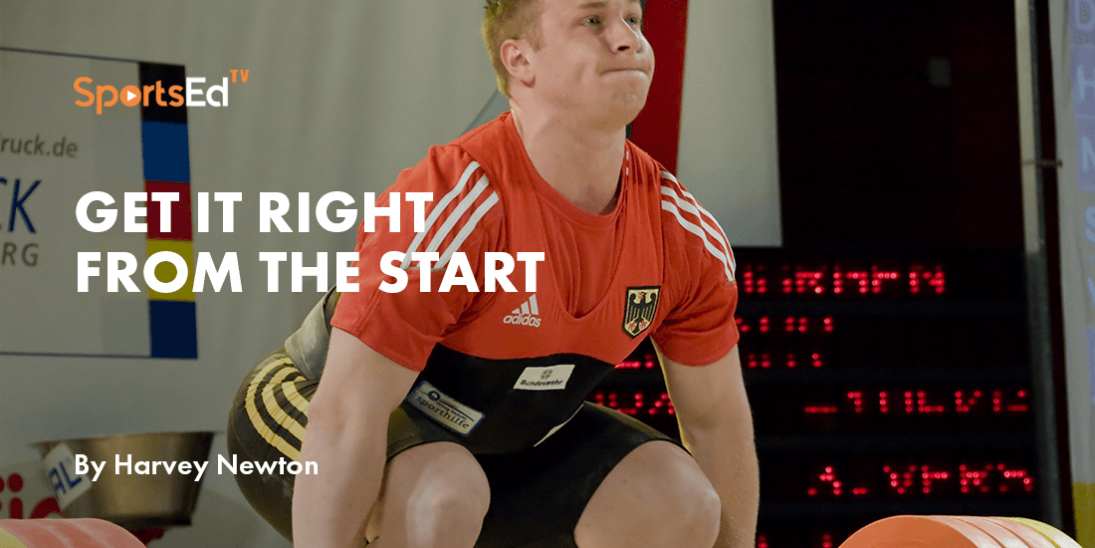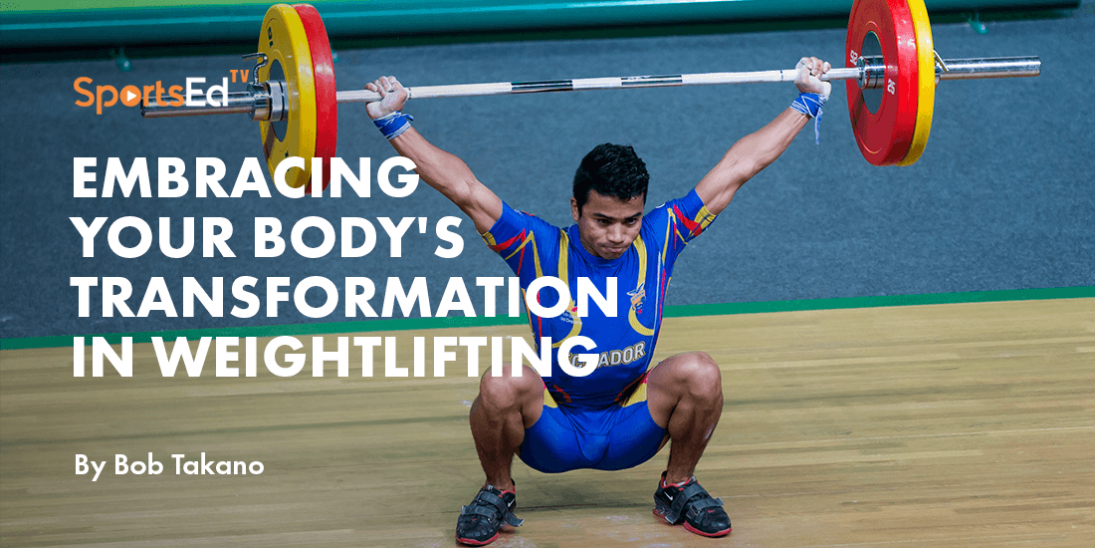Weightlifting
Welcome and thanks for visiting...

An Interview with Coach Kyle Pierce, EdD
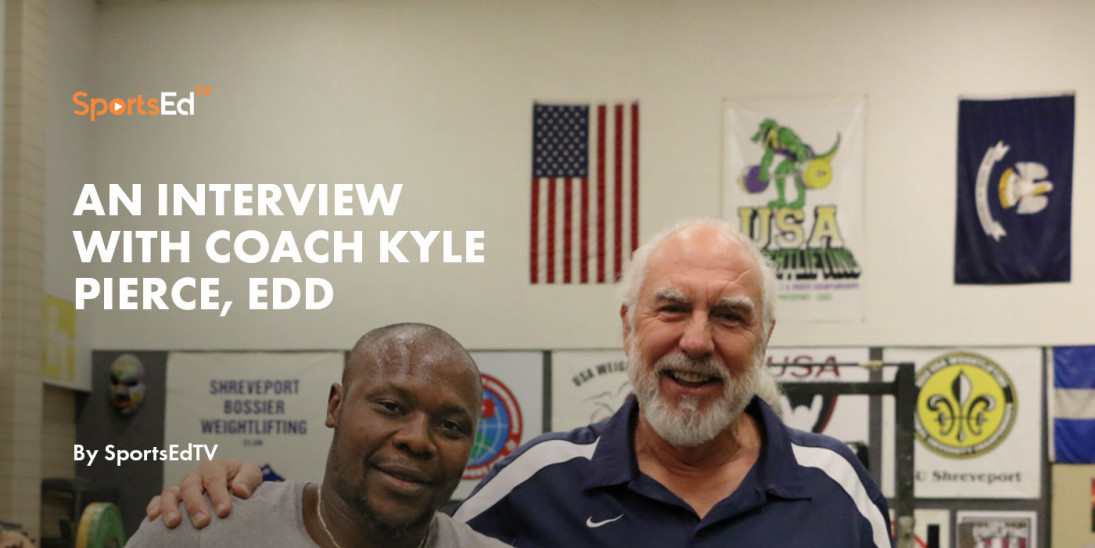
HN: I would like to welcome the SportsEdTV audience to another Zoom interview with a key individual for the sport of weightlifting in the US and internationally. He is a long-time friend of mine: Dr. Kyle Pierce. Kyle has been a professor at the LSU Shreveport campus for many years.
Today we’ll discuss some of the influences Kyle has had both in the United States and abroad. We will focus on some follow-up questions related to youth training. Recently we had an excellent blog from Elisabeth Oehler of Germany, who also talked about some of the challenges of training young athletes. We would like to expand on that because Dr. Pierce has a great background in that area.
Also joining us the CEO of SportsEdTV, Victor Bergonzoli, who trained as a weightlifter as a youth. Victor was instrumental in bringing weightlifting to SportsEdTV.
HN: Kyle, please give us a little background on yourself, as an athlete, as a coach, and as an official. You could probably speak for the next hour on just that topic.
KP: Well, first, I'd like to thank you and thank Victor for having me here. I appreciate it. Thank you.
I grew up loving sports, but I wasn't the best athlete around. I was always seeking out ways to do better. I played Little League baseball and I loved it and thought that's what I wanted to do. I’d be a baseball player, and later the manager of the New York Yankees. Later, being from South Florida, football is very big. I got involved with football, but I wasn't very good at that. I liked to kick, but I wasn't too good at that either. I did kick a field goal back in the 1960s, playing high school football.
I walked on in Western Kentucky to be a kicker. It took me five years to get a half-scholarship and I lettered. All along I read how to get better, but oftentimes I did the wrong things. Like, I was running long distance, trying to get more power in my legs, or doing leg extensions and leg curls, things like that.
We had a weightlifting exhibition with Athletes in Action, with Russ Knipp and his team. That's the first time I'd seen weightlifting in person. About that time, we had some shot putters, Jesse and John Stewart, transfer in from Kentucky. John had been the conference champ; Jesse was an NCAA champ. They participated in weightlifting.
It was those guys that influenced me, introducing me to weightlifting. In fact, Jesse took me to my first competition in 1974, in Glasgow, Kentucky. It was weightlifting that helped get my legs strong enough to get that half-scholarship. I loved weightlifting and wanted to learn more about it.
I wasn't the best athlete, but I always searched for information and I trained. I went back home, which is about when I met you. It was at Joe Pitman's meet in Vero Beach, FL.
Joe (10 times USA champion, 1950 World Champion) always had a meet the first weekend in December and the first weekend in May. You were the announcer. I'd learned to snatch by banging the bar off the thighs. And you made some comment about the banging. I was like, “Who is that guy over there?”
Eventually I trained with a guy named Foster Cather. He’d trained with you, so you were one of my earliest influences on proper technique. I directly learned from you at a clinic at the Stuart, Florida police station. You had written about proper technique back then, and have always been an influence, even today.
I was going to go back to school and get certified as a coach, thinking I’d coach football and track and field. I knew my undergraduate degree was not a teaching degree. So, I took some necessary classes at Florida Atlantic University. Then I thought, why not go ahead and get a master’s degree? I went to Florida International University, and really enjoyed it.
I had a really good professor there named was Jack Luella. As a noted sports psychologist, Jack did a lot of work with John Smoltz to help him make his comeback. He worked with a lot of the Atlanta Braves. Under his influence I thought, maybe I'll keep going academically. I loved all the sports science, the exercise physiology, the motor learning, and motor development. Jack encouraged me to do it.
I also had a friend named Sam Seemes (now CEO of the US Track and Field and Cross-Country Coaches Association). He had been a graduate assistant at LSU for track, and he encouraged me to apply to get a coaching assistantship. The first time around it didn't work; they said they lost my stuff. In the meantime, I met Mike Stone, PhD, who was teaching at Florida State University. He was also a part-time strength coach. In those days, even the strength coach was part-time.
I went there to pursue my doctorate, then they started a program at Auburn University (The National Strength Research Center). Mike, John Garhammer, Terry Todd, Tom McLaughlin were all there. Doc Stone talked me into going to Auburn. It was a great place to be at that time, with a lot of powerlifters, weightlifters, and researchers, but it didn't last very long.
These were all great opportunities for me to learn about sport science. Now I could help others train right. No more long runs on the beach to build power!
HN: You're been at LSU-Shreveport for quite some time, you're a tenured professor there. How did you end up there? You've held more national lifting meets than anybody else in the country. The university has become very much of a magnet training center that has produced some spectacular athletes, certainly Kendrick Farris, three-time Olympian. You've had several guys on the junior world team. You've trained a number of women who've gone on to the world championships. What's made LSU-Shreveport such a magic spot for the sport of weightlifting?
KP: My first job after leaving Auburn was at LSU Baton Rouge. I taught there a year. It was one-year appointment. I went back as a football graduate assistant. My father had known Bill Ernsberger and said for me to go see Coach Ernsberger. At about age 35 I was a graduate assistant offensive line coach. The next year I took a job at Tulane. But I wanted to be a strength coach. In the early 1980s many teams were getting a strength coach. I was asked why I wanted to be a strength coach, especially with a doctorate. They were all a bit suspicious of me.
But in the late 1980s it was difficult to live off a $1,000 a month so I ended up moving to Cincinnati to work in corporate fitness, which was not my thing.
I talked to Ron Byrd, PhD, one of my mentors. We’ve done several publications together, and still keep in touch. In 1990 Ron said that LSU Shreveport had available a one semester appointment. The university was starting athletics, and the building manager who taught weight training was going to be the athletic director. I formed a little weightlifting club at the YMCA and some of the kids did pretty good. One of the kids, Jacob Hester, went on to be a noted athlete, playing later for LSU and a few years in the NFL as a fullback for San Diego.
His father still brings kids by here and promotes our program. Jacob started lifting when he was nine years old. A lot of folks thought lifting would stunt his growth. I still joke with his dad that if Jacob had not lifted weights, he might have been an offensive lineman instead of a fullback in the NFL.
HN: We certainly want to look at youth training, because, as Elisabeth Oehler pointed out in the recent blog, what I'll call an “old wives’ tale”, that lifting weights is going to stunt your growth, is still with us today. Those of us that know the sport know that the opposite is true.
KP: Yeah.
HN: Sorry to interrupt, but we'll get back to that later.
KP: I worked at the 1996 Atlanta Olympics, as the training room manager. After the Games I came out to Colorado to work with you at the NSCA. Being in an office wasn't my thing, I'm more comfortable teaching in college. And it’s a little colder in Colorado than where I grew up in Florida! I ended up coming back to LSU-S because USA Weightlifting was starting a development center.
A friend, Rick Killingsworth, told me a Shreveport-Bossier City Sports Group was forming and they wanted to attract events. In the first years we worked through the city and not the university. But the university provided us with space. We had some equipment and eventually added to that. I went around to all the schools and got weightlifting going.
My first trip to Shreveport was for the Independence Bowl when I was at Tulane. I had contacts with the community and had done a lot of volunteer work. I kept promoting the sport and got a bunch of kids involved. It took a while; it was not accomplished overnight.
HN: You're in a part of Louisiana not previously noted as a hotbed for weightlifting. There had been a lot of lifting in Baton Rouge. And years back there had been a lot of activity down in New Orleans. You were a little off the grid there.
KP: Kendrick Farris' uncle found out about lifting through an article in the paper. He brought Kendrick by in late 1997 or ‘98. Most these kids got involved through word of mouth. The parents really liked what lifting did for the kids. Parents would say “Now my son is standing up straight, he sits up, he’s proud. He feels better about himself.”
I always say that one of the goals of these development centers is to produce athletes for world championships and Olympic Games. But I also always say that I want to help kids build self-confidence, which you can do if lifting is done properly. Weightlifting is a great sport for that.
I've coached football, as I mentioned, have coached track and field, and I coached Little League Baseball. And I've been involved with women's basketball here. I have a state championship ring here in Louisiana from working with the women's basketball, where I did strength and conditioning.
Our program has always been free for the kids. We've added Paralympics, so I became a national referee for powerlifting. A few years ago, a lady moved here from Nigeria, Grace Anozie, a four-time Paralympic competitor. In London she won the 82.5kg category with a bench press of 162kg! Paralympians have the bar lowered, and you must have a pause. Competitors lie flat with legs straight out and no special gear.
HN: That's an amazing bench press.
KP: We've also worked with Special Olympics. Several Special Olympians have competed in open USAW events. I love it. With such diversity in our gym, it's just a good feeling. People get along and support each other.
HN: So that attitude builds the magic; it's almost like the Old York Barbell gym back in the ‘50s. LSU-Shreveport’s weightlifting center has also attracted a number of foreign teams. You have regular guests that come every year, correct?
KP: Junichi Okada, a professor at Waseda University wanted to have a training camp here. He felt that the language barrier is tough for his Japanese lifters at international competitions, and they were a bit shy. If they could improve their English and train together with us, they would do better at international competitions.
Initially, about 14 years ago, they brought about six or seven lifters. They were all college students and had to qualify. They stayed for almost three weeks. They had English as a second language class in the morning and trained in the afternoon. The Japanese lifters stayed with local families. Over the years we’ve had close to 80 Japanese lifters and a lot of coaches participate.
Some of them have come multiple times. One time they stay with a family and the next time they stayed with a college student. Now they really see what life is like here.
One of the students came back to LSU-S to get his master's degree. He was a graduate assistant and served as a coach here. He returned to Japan to get his doctorate.
HN: I always refer to you as sort of a UN ambassador for the sport of weightlifting.
KP: We didn't plan on being a college program, but some of the younger kids started to do well here. It's a very affordable school. The weightlifters get in-state tuition. One of the guys you coached, Jason Brown, graduated, stayed and got his MBA before heading to law school in Texas.
We’ve had over 75 kids come from out of state or from foreign countries. We have two Hawaiian girls here now. Bradley, who was from Barbados, got his degree and stayed to go to nursing school. He’s now practicing in the Dallas area. A couple of girls from Mexico came here to go to school. And now one girl not only got her bachelors here, but also got her masters as well. I got her a graduate assistantship.
HN: I’m reminded of the international effect you've had on athletes from Ghana. You’ve had lifters attend school here and you’ve often traveled to Africa. You certainly wore the most colorful shirt during the 2016 Olympic opening ceremony as the Ghana coach.
KP: I heard Ghana wanted someone to come down and offer some coaching education in the summer. I’ve done several IOC Olympic Solidarity courses in different African countries. In 2014 I spent the summer in Ghana. They were trying to get weightlifting going. It’s a volunteer thing. I’ve worked with coaches and lifters from Kenya and Nigeria, as well.
Christian Moha, who competed in Rio in 2016, has been here four times. I’m pushing him about his GED more than I am training because I want him to get that high school diploma.
HN: How can interested athletes and coaches in relatively underdeveloped countries learn about weightlifting? Actual weightlifting federations often don't spread information, especially for strength training to other sports. Our goal with SportsEdTV is to have up to 40 sports, with S&C information for all. Like you, we provide outstanding information for free.
KP: I made contact with Reginaldo Consi, who started the physical education program at the University of Ghana. I tried teaching online, or to travel there for a short-term course. Much of this is impossible under today’s pandemic restrictions. We recently had a Skype meeting aimed at strength and conditioning in Ghana. People tell me, “I'd love to join this or that organization for strength and conditioning, but that will cost me two month’s salary.”
HN: Let's figure out ways for SportsEdTV to work with you on projects like that. But I want to return to the topic of youth training. You saw Elisabeth's recent blog in which she mentioned a physiotherapist challenging her on training young kids.
Like you and Elisabeth, we at SportsEdTV stress proper technique. We all know there's an awful lot of bad information online these days. Kids are often encouraged to lift too much, too soon. You've done a lot of work with position papers and presentations; I consider you an expert on the proper training of youngsters. Please give us some insights into that topic.
KP: There's always been rumors about stunting growth and damaging growth plates. Looking at the literature, that doesn't exist. The American Academy of Pediatrics has come out with five position statements on the subject. One (2008) was favorable to weightlifting. They had published a paper with Ron Byrd and some physical therapists. Over time we’ve showed that kids don’t get hurt like people thought. Injury rates in more popular sports tend to be much higher.
The last paper (2020) is still favorable towards weightlifting. One of the themes throughout is teaching proper technique and following good programs. Not too much, too soon. Avoid earlier specialization. Injuries occur in unsupervised settings, or from fatigue resulting from heavy intensity, just like other sports.
Specialization really causes a problem for any youngster since they often are not prepared physically, or mentally. Sport for youngsters should be fun.
HN: We want kids to learn skills. We want them to learn to move. But they certainly don't need to specialize.
KP: When parents bring kids here, they’re here for weightlifting; they had limited time. But we also try to do other things, little circuits at the end with abdominal work or pull- ups, dips, push- ups, and some jumps. Coaches have to adapt to specific situations.
HN: Kyle, you mentioned a couple of times parents dropping kids off. You’ve also said that many people don't think about the need for transportation.
KP: If the kids can't get here, they can’t train. If there’s a community center where the kids can walk, OK. Parents play a key role in support there. Kendrick Farris’ mother, Monica, was a great supporter of his. She also made sure he did well in school. A lot of his success was his mother, who did so much to support him.
But sometimes parents can go a bit too far. Some constantly talk about their kids and what great football players they will be. “They’ll probably play at LSU!” Come on, the child is 10 or 11 years old and stands about 5’ 5” tall. Mom's about 5’ tall, yet they talk about how Junior will be a D-1 player. One father told me he was confident his son would play college football; when his son was in middle school the father was out looking for motorhomes for tailgating.
We have a great group of parents here. The parent’s organization helps raise funds for equipment and to send their kids to competition. I have always thought the best parents were the ones that supported their kids, got them here, but then let the coaches do the coaching.
HN: You've shared some very unique insights, which is what I thought would happen. If someone wants to follow up with you, how do they contact you?
KP: The easiest way is to email me at kyle.pierce@lsus.edu. I’d love to follow up with any interested party. We’ve had a lot of people come here. Teams from Japan. The Colombians trained here for six weeks. We've had the French team train here. A group from Quebec visits regularly. We’ve had Olympic Champions Christine Gerrard (CAN) and Oscar Figueroa (COL) train here at LSU-S.
I forgot to mention a Canadian student we have here, Corey Coolahan. He talked to my friend and Quebec coach, Augustine Brassard. He came for camp, and then I talked to him about coming back to get his master's degree. He met and married a lady here. They went back to Canada and he got his doctorate. When a position opened up a couple of years ago, he came back, and is now a professor here.
HN: I don't expect you to leave Louisiana any time soon.
KP: I got to work a few more years.
HN: Thanks very much for your time and insights today. Victor, any questions?
VB: Kyle, it's so good to speak with you. Thank you for doing this and for everything you do for the sport. We look forward to cooperating even further. Thank you, guys.
